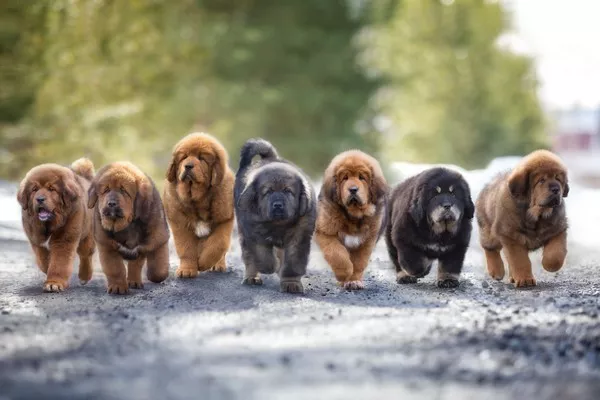Introduction: Unveiling the Size Comparison
The allure of the animal kingdom often leads to fascinating questions, such as whether a majestic Tibetan Mastiff surpasses the size of a formidable wolf. In this exploration, we delve into the reality behind this intriguing comparison, shedding light on the size, characteristics, and differences between the two remarkable creatures.
1. The Grandeur of the Tibetan Mastiff
The Tibetan Mastiff, renowned for its majestic presence, certainly commands attention with its impressive size. Standing between 24 to 30 inches in height at the shoulder and weighing around 70 to 150 pounds, these dogs are undeniably large and robust. Their imposing stature, combined with their dense coat and lion-like mane, contributes to their regal and awe-inspiring appearance.
2. The Enigma of the Wolf
Wolves, often depicted as symbols of wilderness and mystery, hold a certain fascination due to their innate strength and adaptability. Averaging between 26 to 32 inches in height at the shoulder and weighing around 40 to 175 pounds, wolves exhibit a considerable range in size depending on the species and geographical location. Their slender build, keen senses, and pack mentality make them formidable predators.
3. The Comparison Unveiled
In the realm of size, it’s important to consider the specific species of wolf being compared. While some wolves might fall within the size range of larger Tibetan Mastiffs, it’s essential to note that the comparison isn’t straightforward. Wolves possess a different body structure optimized for hunting and survival in the wild, whereas Tibetan Mastiffs are selectively bred for guardian and companion roles.
4. Apples and Oranges: Different Roles and Adaptations
Size alone does not encapsulate the complexity of these two creatures. Wolves are wild predators with adaptations honed by evolution, enabling them to thrive in various ecosystems. In contrast, Tibetan Mastiffs have been bred for specific human-oriented roles, including guarding livestock and providing companionship. Their size serves the purpose of protecting and bonding with humans and animals, rather than hunting.
5. The Unique Charms of Both
Each creature, the Tibetan Mastiff and the wolf, possesses its own set of unique characteristics and charms. The Tibetan Mastiff’s loyalty, protective nature, and regal demeanor make it a beloved companion, while the wolf’s role in maintaining ecological balance and its intricate social dynamics contribute to its significance in the wild.
Conclusion: Beyond Size—Respecting the Individual
While the question of whether a Tibetan Mastiff is bigger than a wolf intrigues the imagination, it’s vital to recognize that size alone does not define the worth or significance of these remarkable beings. Both creatures occupy distinct niches in the world, with their own contributions to the ecosystem and human experience. The comparison between a domesticated canine and a wild predator reveals that size is just one aspect of what makes each creature special in its own right.
Fun Fact: A Rare Friendship
While the comparison between a Tibetan Mastiff and a wolf may conjure thoughts of size and power, it’s fascinating to note that these two creatures, seemingly from different worlds, have occasionally formed unexpected friendships. There have been documented instances where domesticated Tibetan Mastiffs and wolves have formed bonds in captivity.
In a heartwarming example, a Tibetan Mastiff named “Yuanzi” at a zoo in China developed an unlikely friendship with a group of wolf cubs. Despite their differences in species and origin, Yuanzi became a surrogate mother to the wolf cubs, nurturing and caring for them as if they were her own. This heartening display of interspecies friendship reminds us that even in the animal kingdom, connections can be forged that transcend boundaries and expectations.
Such instances underscore the complexity and wonder of the natural world, where relationships and interactions between creatures can surprise and inspire us, reminding us that even the most unlikely companions can find common ground.


